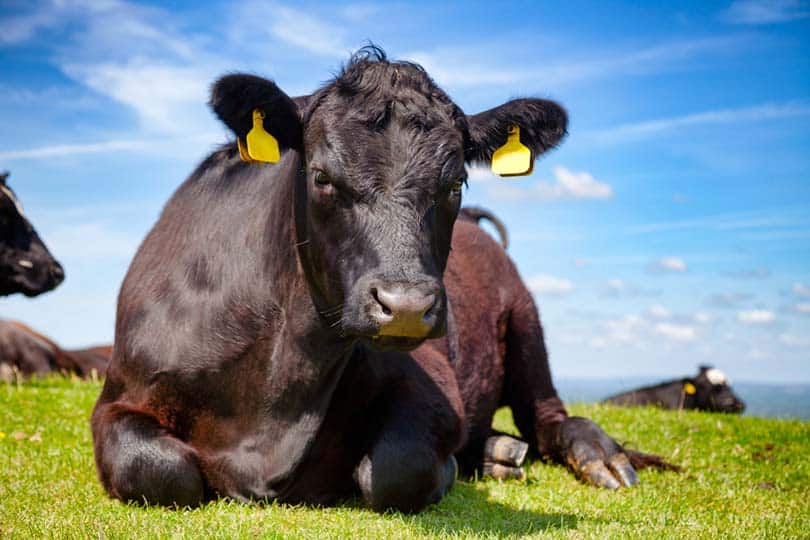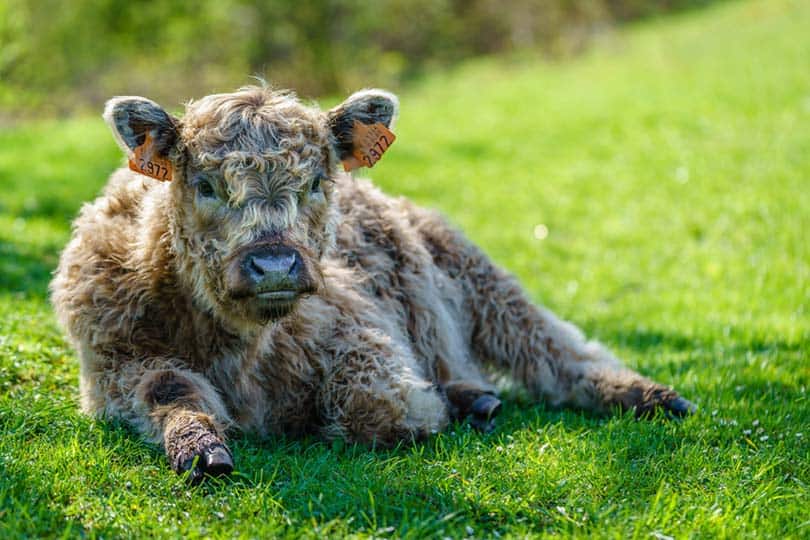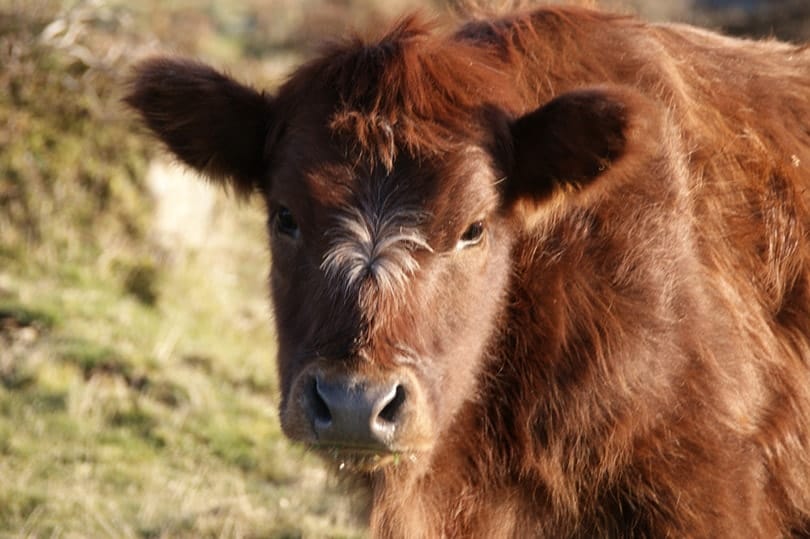Most of the dairy and beef industry dehorn their cattle or alternatively, raise “polled” cattle. Polled cattle are cattle that naturally have very small or no horns, but these cattle breeds typically do not produce the volume of meat and dairy required by the industry. The practice of dehorning has sparked a great deal of controversy among animal activists, though, and many claim that the process is both painful and unnecessary to perform on cattle. Dehorning is done to reduce the risk of potentially harming other cattle or people.
Let’s take a deeper look at why cattle are dehorned at all and if there’s any evidence that it causes them any pain. 
Why Are Cattle Dehorned?
The majority of cattle in modern agricultural practices are dehorned, typically while they are still calves but often as adults too. Dehorning is the removal of a cow’s horns to reduce the risk of potentially harming other cattle or people, to make cattle easier and safer to transport, and even to increase prices at auctions. It is considered a “necessary” procedure by most of the beef and dairy cattle industry.
Horned cattle can cause injury to other cattle and damage to hide and carcass quality and to infrastructure. They also require more space for housing and transportation and are more hazardous to farmers and other workers.
Most of the time, dehorning is carried out on calves under 2 months of age, as their horns are not fully formed and not yet attached to their skull. The procedure in calves is called “disbudding.”

Is Dehorning Painful?
There is a nerve that runs from behind a cow’s eye to the base of their horn, which supplies the necessary sensation to their horn. Without anesthetic — and most of these procedures are done without it — this certainly does cause acute pain in calves and adult cows. Although these procedures are deemed as necessary and justified for handling and animal welfare reasons, they are undeniably painful for cattle.
Pain caused by these procedures has been analyzed by experts in three ways: behavioral, physiological, and production. Behavioral indicators include shaking, kicking, scratching, and decreased feeding, while physiological and production indicators include increased cortisol levels, heart rate, and respiratory rate and decreased weight gain.

How Are Cattle Dehorned?
Sometimes, cattle are de-tipped rather than dehorned, which simply involves taking off the very sharp tip of their horns. However, it does little to mitigate the overall risk posed by horned cattle, and most farmers opt for full dehorning. The American Veterinary Medical Association (AVMA) recommends dehorning cattle at the youngest age possible, which is typically between 3 and 6 weeks old. Ways that cattle are dehorned include:
- Hot-iron disbudding. A special iron is heated until it’s red hot and held firmly onto the calf’s horn bud for around 20 seconds. This destroys the horn bud and stops it from producing grow cells and thus, future growth.
- Caustic paste disbudding. A combination of caustic substances inside a paste is applied to the calf’s horn buds, which cauterizes the tissue and prevents the horns from growing. This process is allegedly less painful than hot-iron disbudding but cannot be performed on calves over 8 weeks old.
- Knife dehorning. A knife is used to cut away the skin around and beneath the horn, which surgically removes it from the calf. Sometimes, instead of a knife, some other specialized instruments are used that make the process quicker, including a gouger, keystone, or circular “spoon” blade. This is likely the most painful and traumatic method of dehorning.
- Hand saw dehorning. This is the method most often used in older cattle. The horn is removed using a handsaw, along with a ring of skin around the horn. Sometimes, obstetrical or embryotomy wire is used instead of a handsaw, but either method is extremely risky and causes a great deal of pain to the cattle.
Is There Any Pain Relief During the Dehorning Process?
Most organizations, including the AVMA, recommend dehorning calves rather than adults, as their horn buds are still free-floating and not attached to their skulls. The horns do not yet have a full blood supply, and the process is thus thought to be less painful than for adults.
According to a fairly recent survey, only 10% of dairy farmers used anesthesia before dehorning calves, citing an unwillingness to pay the extra cost of medication or call in a vet. This is alarming. While the AMVA recommends the use of anesthetics and non-steroidal anti-inflammatory drugs to relieve post-operative pain, there is no legal obligation or restrictions nor a recommendation for pain relief prior to the procedure, other than sedatives.


Conclusion
Cattle are dehorned for several reasons, primarily for the safety of other cattle and of their handlers. The dehorning process is painful for both calves and adults, but since a calf’s horns are not yet attached to their skull, the process is thought to be less painful overall.
There is currently a call for beef farmers to make the transition to breeding polled cattle to mitigate the need for this process and for restrictions to be placed on dehorning cattle and calves without anesthetics.
Featured Image Credit: ozymandias11, Shutterstock
